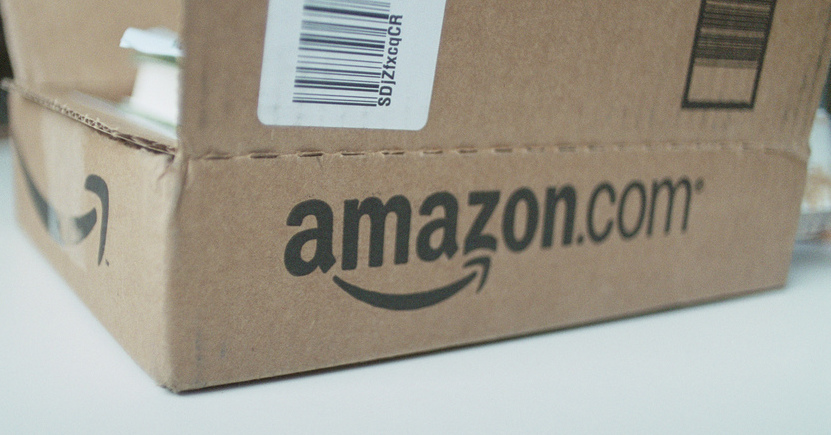On October 5, Amazon issued its first-ever public safer chemicals policy. The policy includes restrictions on dozens of toxic phthalates, parabens, formaldehyde releasers, nonylphenol ethoxylates (NPEs), triclosan, and toluene in its private brand baby, household cleaning, personal care, and beauty products in the United States. Consumers are increasingly clamoring for products free of these chemicals of concern. The company states that “Amazon encourages manufacturers to phase out potentially hazardous chemistries and adopt green chemistry alternatives.”
A growing trend in the retail sector
Amazon’s policy commitment is a notable first step, particularly as the company continues to build out, expand, and increasingly market its assortment of private brand products. The company joins a growing universe of companies that are leveraging their market power to drive toxic chemicals out of global supply chains and transition to safer alternatives. Just last month, Rite Aid announced a chemicals policy that restricted many of the same chemicals in its private brand products. It’s no coincidence that these policy announcements come just one month before the release of our 2018 retailer report card.
Key elements of Amazon’s chemical policy
Amazon’s new policy is a significant improvement compared to our first evaluation of the company nearly two years ago. Let’s take a look at five significant elements of the company’s new policy, much of which is aligned with the criteria in our Who’s Minding the Store? annual retailer report card:
- Chemicals that can cause cancer and build up in our bodies. The company identifies chemicals it is working to phase out as those that “1) meet the criteria for classification as a carcinogen, mutagen, reproductive, or other systemic toxicant; or 2) are persistent, bioaccumulative, and toxic.” In other words, chemicals that can cause cancer, reproductive or other serious harm, or that can persist or build up in our bodies and the environment. These are important categories of chemicals for the company to tackle as it implements its policy and expands the list of restricted chemicals.
- Amazon’s list of restricted chemicals. Amazon has publicly disclosed the company’s new Restricted Substance List, a list of 54 chemicals, which have been linked to some of these very same health concerns. This list is well aligned with many of the same chemicals other retailers like Walmart, Target, CVS Health, and Rite Aid are restricting. It is valuable for retailers to send similar market signals on chemicals of concern they are challenging suppliers to eliminate.
- Preference for safer alternatives. The company states it wants suppliers to not only restrict harmful chemicals but move to safer alternatives, such as those that are on the EPA Safer Chemical Ingredients List under the Safer Choice program. This is good news.
- Making it easier for customers to buy safer products. The company says “Amazon has begun work on features that will make it easier for customers to discover, identify, and purchase products with safer formulations and sustainable attributes. This work will include making safer chemistry third-party product sustainability certifications such as Safer Choice, Made Safe, Green Seal, and Cradle to Cradle more prominent.” We applaud Amazon’s support of these credible third-party safer chemicals standards, which can help their customers purchase safer products and spur more companies to seek these certifications. We look forward to seeing how Amazon will make products that meet these standards more prevalent.
- Increasing the transparency of products. The policy includes a commitment to transparency and states that its “ We hope that making this information more readily available for customers will encourage additional brands to move away from potentially hazardous chemistries in their products and adopt safer chemistries.” While the commitment currently lacks details or deadlines, it could be very significant over time given the power and popularity of the Amazon.com platform.
We salute Amazon for taking its first step with this new policy that can help drive harmful chemicals out of global supply chains. Over time their actions will help consumers buy safer products and drive green chemistry solutions.
Five opportunities for improvement
While the policy is a strong framework, as the third largest retailer in the U.S. and one of the largest that is growing globally at a massive pace, the company still has a way to go to address the chemical footprint from the hundreds of millions of products it sells.
Amazon previews its plans for 2019:“The policy will be expanded to additional brands, product categories, and geographies over time…To further our commitment to transparency, in 2019 Amazon will continue to work on additional product category RSLs under this Chemicals Policy, and work to achieve fuller ingredient disclosure on its Private Brand product detail pages.”
We are glad to see the company’s commitment to expanding the policy to address other chemicals, product categories, and increase transparency for private brand products going forward. Here are five key ways Amazon should build on that commitment, implement and continuously improve its policy in the year ahead:
- Expand the policy to brand name products, like toxic paint strippers. The policy addresses a relatively limited array of private brand products, compared to the seemingly infinite number of other products it sells. The company should expand the policy to address key chemically intensive brand name products. As a first step, it should join Walmart and other retailers in banning the sale of paint strippers containing methylene chloride and NMP by the end of 2018. This is a low hanging fruit opportunity for the company to demonstrate it is seriously committed to having the policy also address brand name products containing dangerous chemicals. It could leverage its Restricted Products program to address products such as these. Next, the company should extend its restrictions on private label formulated products to those same categories of formulated brand name products on Amazon.com by the end of 2019, just as other retailers have done.
- Tackle electronics, apparel, and food. Amazon is on track to be the biggest retailer of apparel and electronics in America, and one of the largest online retailers of food. In recent years the company has been unveiling new private brand apparel, electronics, and food products. Chemicals of concern such as PFAS, flame retardants, and phthalates are commonly found in these types of products, and Amazon should expand its policy to address them to ensure that these product categories are free of such chemicals.
- Set clear timeframes, goals, and metrics. Other retailers such as Target and Walmart have announced clear timeframes for reducing and eliminating chemicals of concern over the past year. In contrast, Amazon’s policy does not include any clear public metrics. The company should set public quantifiable goals going forward to measure progress.
- Make online ingredient transparency mandatory. Amazon should require online ingredient disclosure (including fragrance ingredients) for all products sold on Amazon.com, beginning with private label and brand name baby, household cleaning, personal care, and beauty products.
- Publicly reporting on progress annually. Amazon should publicly report metrics on an annual basis, sharing both its progress and challenges, as it implements its chemicals policy.
These five improvements could help Amazon make its chemicals policy truly Amazonian. As a famously “customer-obsessed” company, in the year ahead the company should expand its chemicals policy to meet the rising consumer demand for safer products.
We hope their new policy signals a real commitment to getting tough on toxic chemicals, and look forward to its implementation and expansion in the year ahead. As one of the world’s largest retailers, Amazon has the power to drive transformative change to get toxic chemicals out of commerce.





